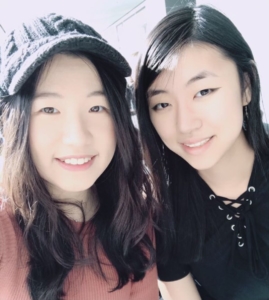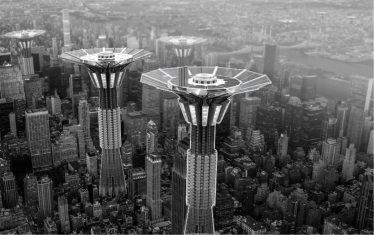Wanlu Liu & Tak Ying Chan / LICC 2020 Winners Interview
Interview with Wanlu Liu & Tak Ying Chan about teamwork, the challenges they faced while realizing their winning project, The Eave and their sources of inspiration throughout the creative process.
What do you see as the strengths of your winning project and what does this award mean to you personally?
We think the strengths of this project come from the consideration of what the project can provide for the people who interact with the project, as well as attempting to provide solutions to current events. This award is an acknowledgment of this achievement and for that, we are greatly appreciative.
What impact has winning this had for you?
We are very thankful for the exposure and the confirmation of our work. The biggest impact would be being able to see many creative projects and having the opportunity to be introduced to many new projects.
What was most important for you when planning the project and what were the biggest challenges you faced?
The biggest challenges came from stepping out of set boundaries to imagine a new possibility. This project gave us a chance to set our imaginations into concepts and provide a new possibility.
Where do you get motivation and inspiration for your work?
Our inspiration typically comes from problems that we have faced and current events. As a designer, there is an opportunity to use creativity to imagine new possibilities which we often use as the motivation behind our work.
How do you think your own culture and environment has shaped your personal and professional creative vision?
We both grew up in diverse communities. Therefore inclusivity and diversity has always played a large part in our design.
Who in your field do you most admire and why?
We most admire our teachers as they were an important part of what shaped our styles in design. During the time of this project, we were both students and we would ask for their opinions and critiques to refine the project.
What do you think are the biggest challenges and opportunities in your career and industry now?
The biggest challenges/opportunities in the industry now revolve around adapting to working remotely. This also provides a chance for designers all around the world to connect and work on projects together.
How do you decide to take on certain projects?
Outside of work and school we mainly decide on projects based on interest or if it provides a challenge. We also sometimes decide to take on projects that have interesting past winners or concepts.
What’s your creative process and what creative software do you use?
Our creative process typically starts from paper. Discussing and planning a concept, working out the logistics, and eventually moving these ideas into the computer at the last step. Software-wise we used Rhino for modeling, Vray for rendering, Photoshop for touch-ups and drawings, Autocad for floor plans, and InDesign layout and plotting.
What kind of questions do you ask before beginning a project?
We usually ask how this project would be of use and if the project is providing a necessary function. Then we ask if we are capable of creating such a project as it is important that we have a solid and feasible concept otherwise it is hard to move on with the project without a solid foundation.
What kind of culture or structure needs to exist to foster successful team collaboration?
Successful collaborations are a result of clear communication. It is important to clearly divide workloads and constantly keep in touch with one another. Although it is not mandatory a good relationship outside of work is also important, it provides a good foundation for open discussions and a chance to better understand your team members.
What advice would you give to someone starting out as a designer?
We would say to find a good mentor and practice. Nothing is perfect the first time, or any time really. It is all about being willing to learn and take critiques and keep on trying. Most importantly we would say to enjoy what you are doing, the best projects come from passion.
View Wanlu Liu & Tak Ying Chan’s winning project.
© 2025 London International Creative Competition




Recent Comments